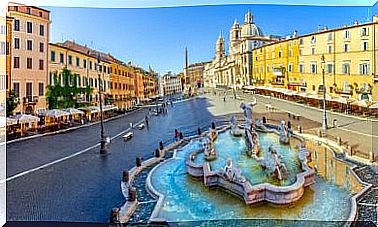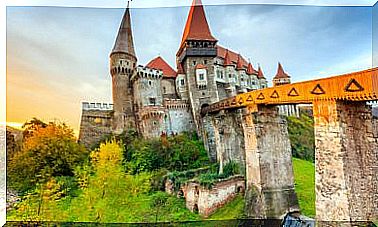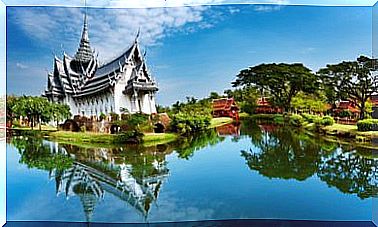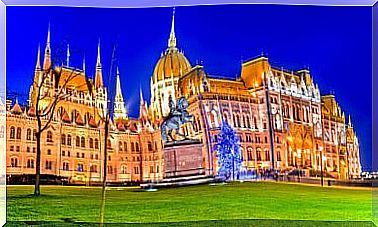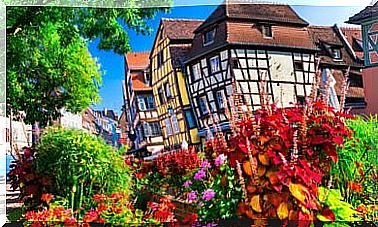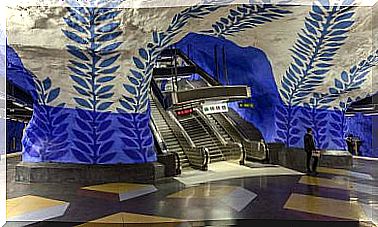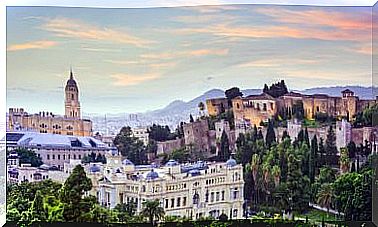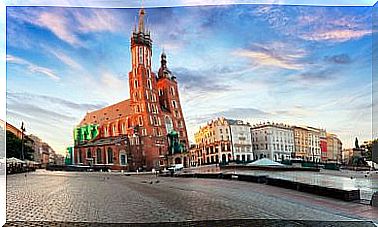A Route Through The Roman Ruins Of Croatia

Croatia is known as the pearl of the Adriatic and there is no doubt that there is no lack of reasons for this. This destination has an exceptional mix of paradisiacal beaches and beautiful monuments. If you are passionate about culture and classical architecture, the Roman ruins of Croatia should be among your next travel options.
It should not be forgotten that the Croatian territory was for several centuries under the rule of the Roman Empire. For this reason, today you can visit the vestiges and traces that were left in many places in the country. Join us on this exciting itinerary and get to know the Roman ruins that you can visit in Croatia.
The amphitheater of Pula, one of the most outstanding Roman ruins
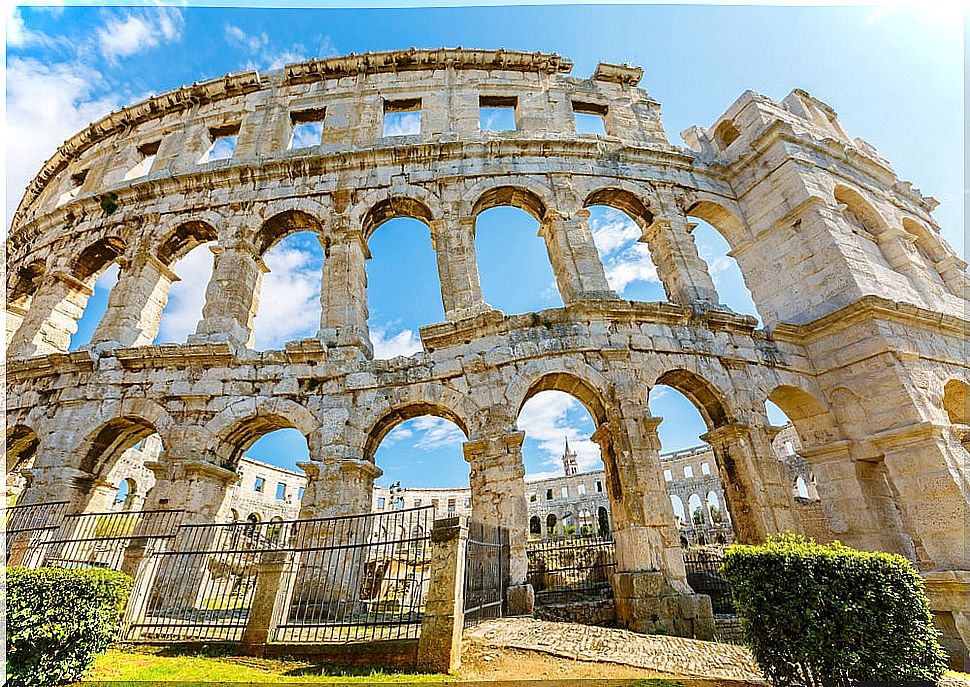
Pula is the largest city on the Istrian peninsula, in northwestern Croatia. It is a city of important tourist attractions, as well as outstanding traces of Roman architecture. Among them, the amphitheater stands out, which was built between 27 and 81 AD.
It was built by the sea from limestone ashlars. One of the facades has three heights, while the rest have only two due to the unevenness of the terrain. It is an excellent example to contemplate the classical architectural orders.
Its large dimensions suggest that it could accommodate more than 20,000 people. The construction is completed with four towers that had two cisterns to supply water.
Gladiator fights used to take place in this amphitheater, but it was also used for martyrdom of Christians. It was in use until the 5th century. Its destiny was to act as a quarry on various occasions, until in the 19th century it opted for its restoration and it has arrived in excellent condition to this day.
The Brijuni islands and their national park
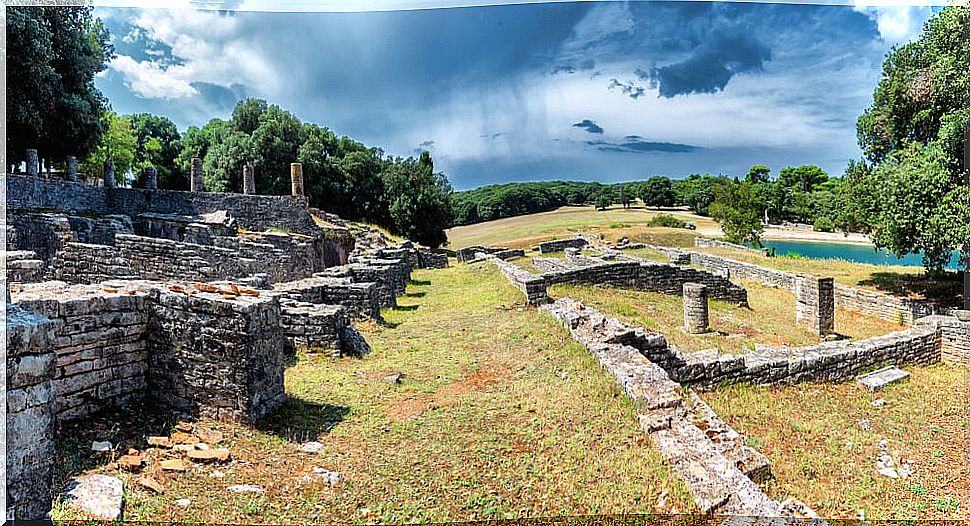
Near Pula is the town of Fažana, from which you can take a boat that in a short walk will take you to the Brijuni Islands. Here you will find the Brijuni National Park, which has a series of Roman ruins. This archipelago is made up of two larger islands and 12 small islets.
On the island Veli Brijun you can visit the ruins of the Roman Rustic Villa, which dates back to the 1st century BC and is located in the bay of Verige. It was a luxurious villa that had a mansion as a residence, several temples, a gym, bathrooms, a pond, etc. These constructions are known to have been decorated with sumptuous mosaics and frescoes.
Without a doubt, it is a highly recommended visit, plus you can stay in the park and enjoy its many attractions. Safaris to know the animals of the reserve (zebras, antelopes, etc.), hiking trails, cycling, golf and various archaeological sites await you in the Brijuni Islands.
The Roman ruins of Diocletian’s Palace
Located in southern Croatia, Split is one of the main seaports on the Dalmatian coast. It is also one of the great Croatian jewels in cultural matters. The old town is declared a World Heritage Site.
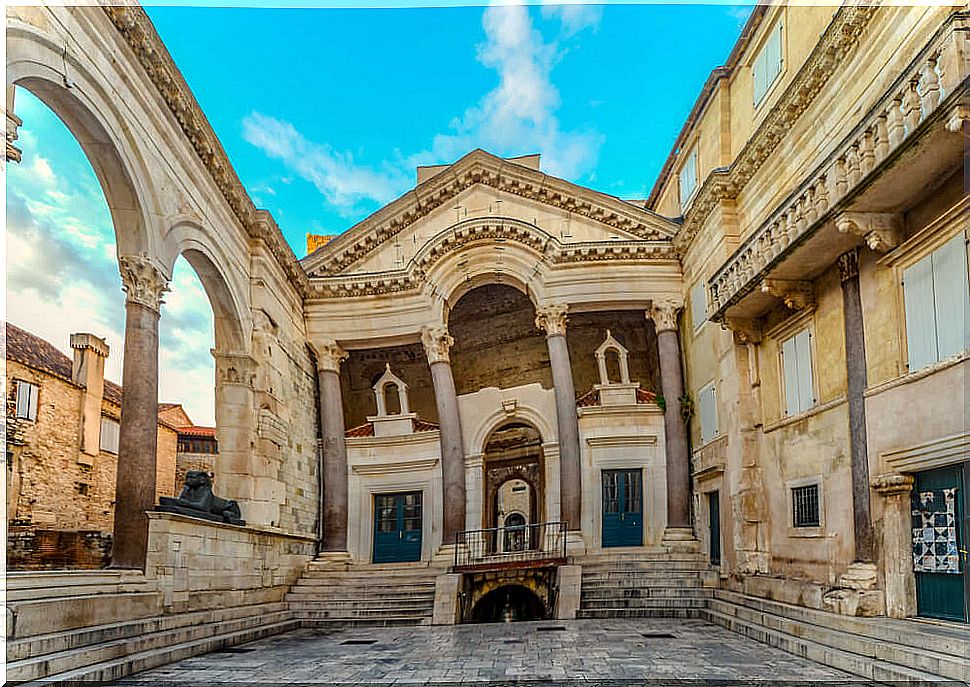
Among its many monuments worthy of admiration, here we will find the Diocletian’s Palace, one of the greatest attractions of this city. This was built by the Emperor Diocletian between the 3rd-4th centuries AD and today constitutes the essential nucleus of Split.
The plant forms an irregular rectangle with towers on three of its facades. Although it is described as a palace, this building combined palatial architecture with that of a walled military fortress. The materials to raise it were limestone and marble. Its state of conservation is really wonderful.
Inside, the building is divided into two halves to separate the rooms for the emperor and the temples of the parts to house the military garrisons. You can also find the Diocletian Mausoleum, converted into the Split Cathedral.
It is amazing to see the perfect separation between the thistle and the decumanus, even inside the building. Similarly, do not forget to look at the decoration made with sphinxes from the Tuthmosis III site, since three of them are preserved.
This outstanding example of Roman ruins has completely merged with the rest of the city, so you will see a multitude of shops, bars and restaurants around it.
The archaeological site of Salona
Near Split are the Roman ruins of the now-defunct city of Salona, in the ancient Illyrian region. This city existed in the first millennium BC and was conquered by the Romans. It is a place with history where Diocletian himself is believed to have been born.
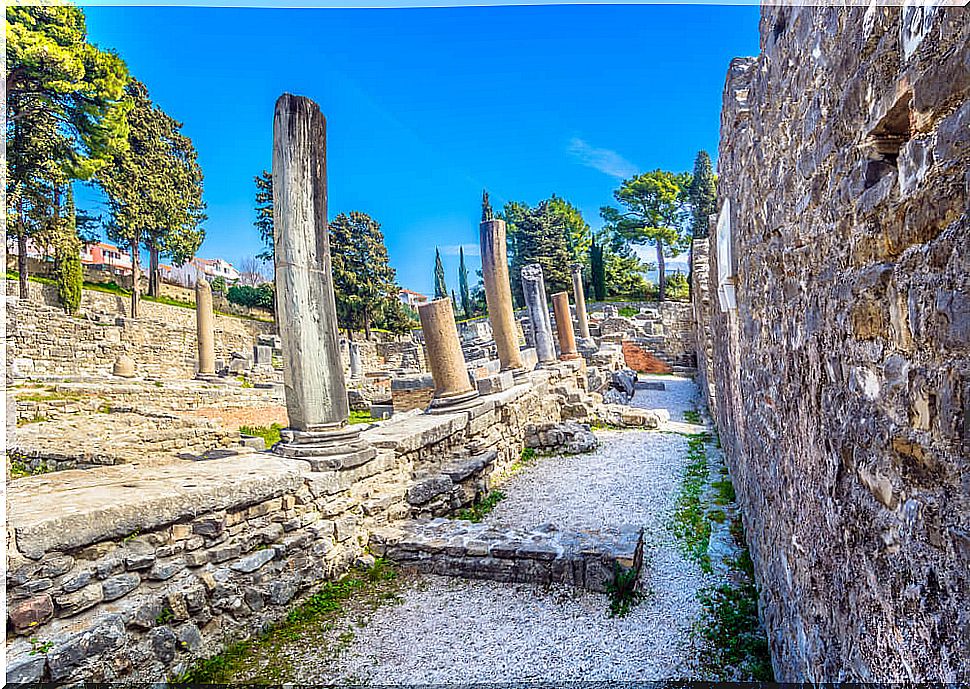
In this archaeological site, we must highlight the Roman ruins of the amphitheater, of which both the exterior walls and the underground rooms are preserved. Its dimensions would be enough to accommodate about 15,000 spectators. Near the seashore you can also find the remains of the forum and a theater.
One of the most interesting areas is the Manastirine necropolis. It is an open-air cemetery where it seems that the first Christian martyrs were buried.
Likewise, the aqueduct of the old city still has some of its arches still standing. Do not forget to visit the Roman ruins of the thermal complex, as well as some structures built by the Christians, such as a baptistery and a cathedral.
In this place you can be transported to the past and make a quiet visit to the different Roman ruins, as it has a lower volume of tourists than the Diocletian Palace. Ideally, you should first stop by the Tusculum Museum, at the entrance of the site, to obtain valuable information about the entire area.
Other Roman ruins in Croatia

There are many places that you can visit if you are interested in Roman constructions in Croatia. Stresses the Roman Forum Zadar. Urns, sarcophagi and remains of columns are preserved there. Today the church of San Donato also stands on this site.
Other interesting Roman ruins in Croatia are Gardum, where you can visit the Tilurium military camp. Or you can go to Sisak, in central Croatia. Here, among other ruins, are preserved the remains of a wall and a tower built between the 2nd and 3rd centuries, when the city was called Siscia and was in the hands of the Empire.


